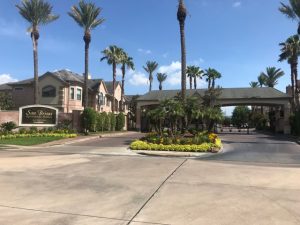Apartment Decorating With Foliage Plants

Apartment For Rent
Plants grown primarily for their leaf characteristics and utilized for apartment interior decoration or landscape purposes are called foliage plants. As our society becomes more urban and live in an apartment, living plants as part of the interior apartment landscape increases.
The use of live foliage plants brings individuals closer to an outdoor type of environment, and the large variety of plants gives us the opportunity to select species that will serve as attractive additions to I apartment interior decor. Foliage plants are excellent for indoor culture since they are able to survive environmental conditions unfavorable to many other plants.
Most avid gardeners continue to grow plants year-round. We start seeds in the apartment living room, grow ferns in the bathroom, bring in begonias from the outdoor garden year after year, and have pots of herbs in the kitchen. Today there are so many interesting plants that can be grown indoors that there’s simply no reason for a gardener not to be surrounded by plants all year-round.
Everyone can grow foliage plants in their apartment with little effort if the right plant is used in the right location. Large-leaved species such as rubber plants (Ficus elastica), Monstera deliciosa, dumb-cane (Dieffenbachia amoena), and Philodendron are especially suited to commercial building interiors. They provide the size required to make them focal points in interior landscaping. These large leaved-plants as well as the smaller specimens such as ferns, vines, and ivies can serve a similar purpose in the apartment.
Practical Steps To Buying Apartment Plants
Indoor plants are raised in glass greenhouses in which the air is warm and humid. When brought into the average apartment, they need to withstand more adverse conditions than the average outdoor plant. Challenging conditions such as minimum light, inadequate ventilation, warmer temperatures, drafts, and dry air contribute to stressful conditions for plants. Considering the following points will help in the selection of house plants that will complement your interior décor and live for many years to come.
1. Strong and vigorous. Give the plant a quick shake. A plant that’s unsteady in its pot may not be well-rooted. Shaking the plant also tells you whether the plant has whiteflies that will scattered in every direction if the plant is infested.
2. Evergreen – Since it will be seen every day of the year, plants need to be evergreen.
3. Attractive – Some of the foliage plants will flower from time to time, but the primary reason for purchasing is the plant’s foliage and how the plants grow in the apartment. The leaves may be selected for their color or form, or both and the growth habit should be attractive and require minimum maintenance.
4. Slow-growing – Select plants that are slow-growing without a lot of pruning or training. They will perform better over a longer period of time.
5. Crowded roots – Check the bottom of the plant for roots coming out of the drainage hole. Roots emerging from holes in the pot don’t necessarily mean that the plant is under-potted, but it’s frequently a first symptom. Root bound plants will require transplanting when you get the plant home.
Practical Steps To Buying Apartment Plants
6. Unhealthy roots – If you can, have the clerk take the plant out of the pot to check for crowded roots. Roots come in all shapes, sizes, and colors. They should always feel firm and not squishy. Squishy roots are a sign of root rot.
7. Stem or root rot – Sniff the potting mix. Signs of rot smell like the sickly-sweet smell of a rotting potato. Don’t buy this plant, as it likely has a bad case of stem rot or root rot.
8. Leaf spots, yellowed leaves, or abundant leaf loss – Leaf spots can be a sign of disease or caused by the jostling of the plants in a garden center. A yellow leaf or two at the base of the plant is nothing to worry about. If you see many yellow or fallen leaves, however, the plant’s probably stressed and therefore not a good choice. Damaged leaves never recover. Ask yourself whether you are willing to wait for the plant to produce new leaves or would you rather purchase a healthier looking specimen.
9. Leggy plants or brown leaf tips – These conditions are signs of a plant that has not received adequate care over a period of time. Spindly plants indicate a lack of adequate light.
10. Signs of insects or disease – Look under the leaves and at the leaf axils (the place where the leaf attaches to the stem) where most often pests hang out. Do not purchase this plant, as not only will you have a problem with it, but you may also infest the other plants in your home.








